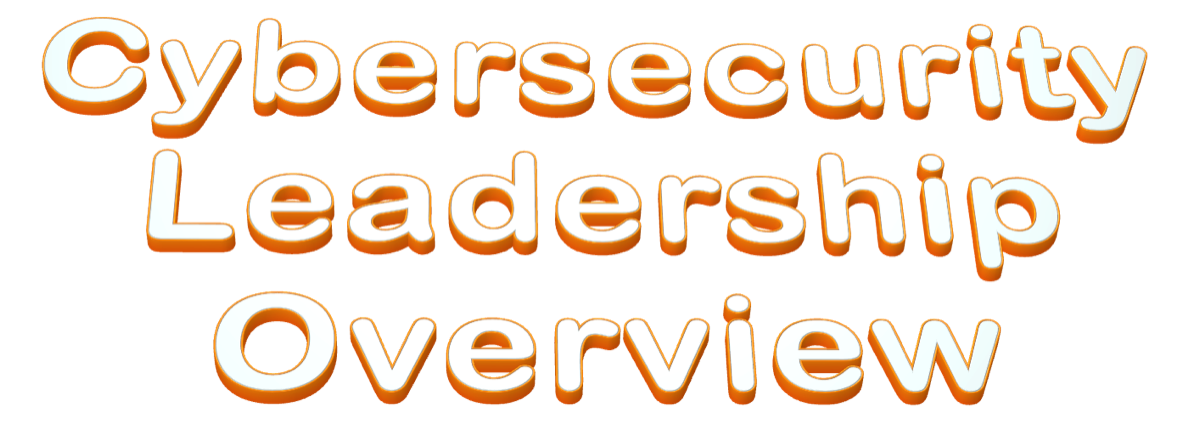People
Cybersecurity requires people to develop, evaluate, implement, and maintain. Likewise, it requires all company personnel to ensure proper cybersecurity hygiene and posture.
Process
Cybersecurity requires processes to manage all the required aspects of people, technology, and interrelated regulatory requirements. Process is the necessary state of proper governance.
Technology
Technology is necessary to implement the service catalog, mechanisms, and tooling to enable the cybersecurity program and cyber resilience.
Cybersecurity leadership (CSO, CISO, BISO, TISO, ISO) has numerous concerns that may keep them awake at night. It can be difficult for anyone to remember all this information. Organizing these concerns into domains helps to structure and manage them for efficacy and efficiency.
These concerns do not represent the skills required for cybersecurity leadership. However, they are the areas of concern that will influence program development. It should be understood that a cybersecurity leader will have similar concerns, but the specifics will vary by industry sector and if the industry is heavily regulated. The relevant skills will be addressed in more detail within the skills section of this Web site.
Cybersecurity Leadership-High-Level Concerns
The Cybersecurity Leadership High-Level Concerns starts the conversation on the high-level domains a cybersecurity leader is concerned with. These domains are addressed at a high-level and then expanded into more detail within the other pages.
These cybersecurity leadership concerns should not be viewed as a conversation on skills. These concerns keep cybersecurity leaders up at night. They are collected into domains because no one person can keep all this information inside their head.
Cybersecurity Leadership-Governance
This expanded domain of the Cybersecurity Leadership Concerns is focused solely on governance. Governance underpins the cybersecurity program and its strategy, target operating model, measurements and metrics, roles and responsibilities, budget, and program reporting.
Cybersecurity Leadership-Mergers and Acquisition
This expanded domain of Cybersecurity Leadership Concerns is focused solely on mergers and acquisitions, but it also considers divestitures. Because of the cybersecurity threats and risks posed by these transactions, cybersecurity leaders will have concerns about due diligence and, eventually, integration.
Cybersecurity Leadership-Project Delivery
This expanded domain of the Cybersecurity Leadership Concerns is focused solely on project delivery. Projects pose cybersecurity concerns regarding secure by design, development, deployment, maintenance, and decommissioning.
Cybersecurity Leadership-Cybersecurity Architecture
This expanded domain of the Cybersecurity Leadership Concerns is focused solely on cybersecurity architecture. Cybersecurity leaders will have concerns when deploying cybersecurity mechanisms and tooling, new on-premises or cloud technologies, and in-house development applications. Similarly to project delivery, architectures will pose cybersecurity concerns regarding secure by design, development, deployment, maintenance, and decommissioning.
Cybersecurity Leadership-Cybersecurity Operations
This expanded domain of the Cybersecurity Leadership Concerns is focused solely on cybersecurity operations (CSOC). This distinction is made to avoid overlap with physical security operations, which may also be referred to as a SOC. This is where the rubber meets the road where cybersecurity leaders will be concerned with whether or not the people, processes, and technologies will be effective and efficient at identifying, protecting, detecting, responding, and recovering from cybersecurity incidents.
Cybersecurity Leadership-Physical Security Operations
This expanded domain of the Cybersecurity Leadership Concerns is focused solely on physical security operations. Not all cybersecurity leaders will be intrinsically involved in physical security operations (unarmed guards, armed guards, locks, CCTV). Other cybersecurity leaders may have physical security as a direct reporting team. Either way, physical security operations (including loss prevention) pose its own set of concerns.
Cybersecurity Leadership-Governance, Risk, Compliance (GRC)
This expanded domain of the Cybersecurity Leadership Concerns is focused solely on governance, risk, and compliance, although GRC is generally the realm of enterprise risk management. More cybersecurity leaders find GRC roles and functions falling under their purview to address cybersecurity threats, vulnerabilities, and risks within areas traditionally managed by enterprise risk management functions.
As a working cybersecurity professional, every attempt is made to separate professional and personal endeavors in a manner consistent with reducing conflicts of interest and maintaining ethics. Statements contained within this site are the explicit and implicit goals, objectives, endorsements, and educated opinion of the author of this site and not those of current or former employers.

